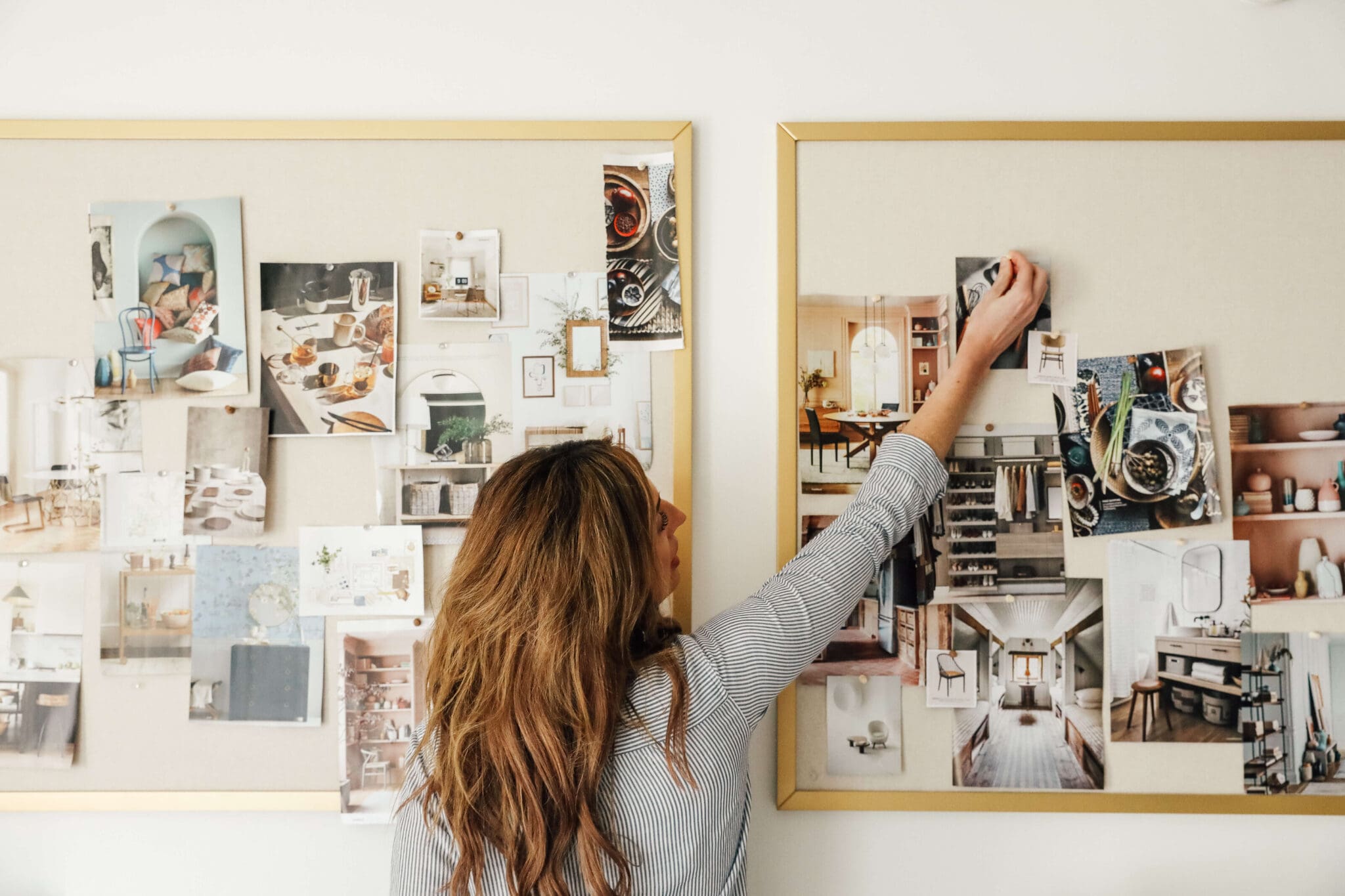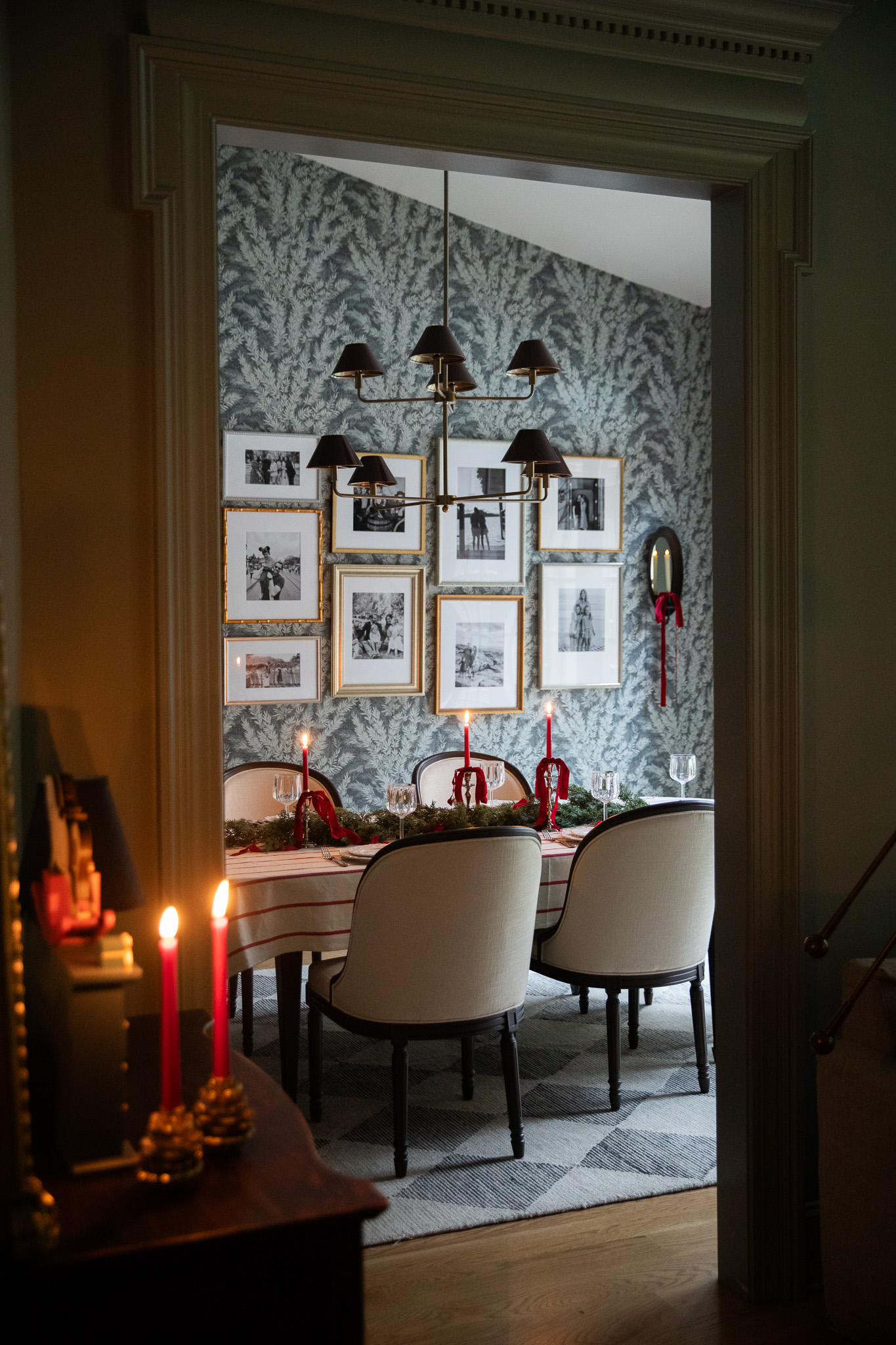When Jules gets an idea in her head, it's not a matter of "if" so much as "when". So when she brought up the idea of making the extra door in our family room, that leads into the playroom, hidden, I knew I had to figure a way to make it happen. Though this was my first time building a hidden door and I was a little nervous, she was right – it made such a difference in the space. Plus, once I really got going this project quickly became one of my all-time favorites.
Before
After
The trim around arched doorway, as well as baseboards and the switch plate cover are next, I promise.
Of course every situation is unique, but following are the steps that I took to build and install this hidden door (otherwise known as a jib door), with the paneling. If you're looking to install a hidden door, definitely adjust as needed!
Frame the doorway and build your jamb
I knew the best way to hide the door would be to get the seams to line up with the vertical paneling we were already adding to the space. This made the door slightly smaller than what was currently there, but only by a couple of inches. I removed the old door and jamb, then put the edge panel pieces in place as my guide. Once I had those, I could then build the new jamb out of primed pine. I had to plane the new pieces down to about 3/8 thickness, then shim every few inches to keep it level and sturdy.
When creating the new jamb, I made sure to factor in a 1 inch overhang on the handle side to act as a stop for the door.
Build the door
Where this door was leading into a kid's play area, I knew I didn't want it to be super heavy. So I decided to use 1in thick primed project boards for the perimeter, and square aluminum tubing inside of that to create a rigid structure that was light weight. I used 90 degree brackets in the corner and self-tapping metal screws to connect everything together, then drilled holes through the aluminum with a metal bit so I could screw the inner metal frame to the outer wooden frame.
The aluminum tubing was also crucial to keeping my door level and preventing warping, since I was building the door on an uneven surface. I used cabinet clamps to make sure all of my seams were tight.
To keep the door from feeling hollow, I added inch thick foam insulation in the center using liquid nails, along with more of the inch thick, 2 1/2" wide project boards as nailers.
The frame was sandwiched between two panels of 1/4" plywood to reach a standard 1.5in thickness.
Hang the door
I used a router to route out the hinge locations on the door, so that the hinges sit flush. We used self-close hinges so that the door will close on its own without having to use a knob on the outside, maintaining the hidden look.
I set the door in place using shims to hold it up, then I marked the hinge locations on the door frame and routed those out as well. Once that was done I could hang the door.
Add the paneling to the wall and door
With the door in place I could now tell exactly where it stopped, how it swung, and I could add all the paneling to truly make it hidden. I extended the thickness of the front of the door so that when I added the paneling, it would be flush with the paneling on the wall. I did this using some wood I planed to get the right thickness, and thinner sheets of foam insulation. (I braced the door from behind so that it wouldn't move while I worked on it).
I added the paneling to the wall above the door, then continued onto the door one piece at a time. I used a 1/8" tile spacer at the top and sides of the door to match the 1/8" spacing between the paneling. Each board was glued and nailed in place to prevent any vibration or loosening over time.
I've found that, even with the self-closing hinges, sometimes the door will still sit open a crack so I ordered some magnets that I will set into the door and frame to hold it closed and flush with the wall. But even without that, with the room painted, the door just disappears. How satisfying is that??
I spent a total of 4 days working on this project, an average of 3-4 hours a day. All-in-all, not bad for my first door and super cool to boot. Once we get the rest of the trim in the room I'll add a little piece of baseboard along the bottom as well to finish it off, but for now we're just enjoying the cool factor of this hidden door, and the unhindered beauty of the arched door next to it.
Leave a Reply

WE'RE CHRIS + JULIA

Portfolio

Projects

































How do you open the door? I want to do this to hide my door that leads to my basement.
You can push it open from the bonus room, and from the inside of the storage room, there's a handle.
Great way to hide an extra door. Looking to do this for a coat closet. Curious as to how you close it from the outside? Are the hinges self closing?
They are self-closing, yes!
I'm so impressed with this hidden door, and I love the color of the room. Wow! I enjoy your blog so much!
Thanks so much, Molly! <3
Love it! Where does the blue paint finish going down the stairs? I'm curious how it transitions to the room below.
At the bottom of the stairs, there's a threshold that leads to a hall so it stops at the molding there.
You should be proud of this project!!! It’s awesome!
Very cool! I feel like the door disappeared even more with the new paint color. Thanks for sharing all the details.
It’s truly so magical!! I’m curious though what it looks like on the other side? I’m sure you’ll cross that bridge when you tackle the playroom!
Just shared on Instagram stories!
This is just stunning! Thank you for explaining how you did it! Wanted to ask how all the nails on the paneling were covered throughout the space. Were they all spackled & sanded before the paneling was primed & painted? Thanks!
Yup!!
Amazing! The color is so dramatic What! What furniture is going in that room? I wonder if the width is a hindrance?
So far, it hasn't been! We had the furniture from the family room stored in the playroom while we were working on it and we pulled it all out yesterday no problem.
Very amazing! One question I have is rhe narrow width. Is that problem with bringing furniture in?
We actually had all of the bonus room furniture stored in the playroom and got it out with no problem.
This is so cool! You mentioned that the door will close on it's own...is there a way to keep the door open (without having to use a door wedge) if you have kids running between rooms or just want to keep the door open so you can see what is going on in there?
There's not. Would have to use a door stop!
Just curious - how did you decide to have it all painted before the window and door trim is up? Always love info on order of operations for renos!
The trim around the windows is all custom because it is curveddddd....so we just had to wait for it to come in. The painters had a specific day they could be here so we just went it.
This is beautiful and starts spinning ideas for our basement. Thank you for doing this, love following the creative and learning process. This design is fabulous. What color is this?
Stiffkey Blue by Farrow & Ball!
Thank you!! This is Farrow and Ball Stiffkey Blue
That's amazing ... and so much better. could you share floor plans so it is clearer what the hidden door and the arched door lead to and from? thanks! If you have already posted floor plans could you direct me to the post? thanks.
The large arch door leads to a corridor that goes to the guest house and the hidden door goes to the playroom!
so cool!!
Your first door?! Chris this is amazing work for your first time out, even if you've done countless other DIY stuff. I've built multiple doors and still don't think I could get as good of a result. Beautiful work and great tutorial.
Julia: "Can we make that door disappear?" Chris: "I'm on it!" What a practical, yet stunning solution to a design dilemma. Great job Chris!
Such a clever piece of carpentry! Must be so much fun for the kids to surprise their friends with
Very nice!